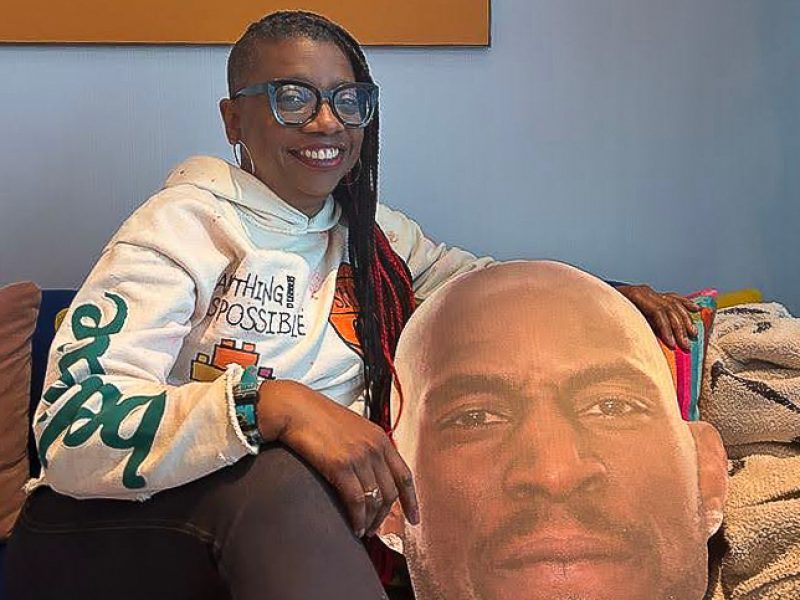Is one still a phoenix if they willingly walked into the fire? Does it matter who lit it if you still rise?
Nia Sioux pirouettes along the line of refreshing truth and self validation in her memoir Bottom of the Pyramid, sharpening each point of this multi-sided answer.
Released on Tuesday, the book is practically a horror novel. A former child star on the reality series Dance Moms, Sioux recounts the Abby Lee Dance Company and its atmosphere of bullying and racial discrimination that she grew up with.
While some of the other dancers on choreographer Abby Lee Miller’s competition team have also published memoirs, Sioux’s is the only one to strike back against her perpetrators.
Anyone who claims to have once loved Dance Moms is in for a media literacy audit. Yes, reality TV is not meant to be reliable, but while Bottom of the Pyramid provides context to the moms’ infamous on-screen faceoffs, anyone who cared enough to read between the lines could’ve predicted this book a decade ago.
[Navigate seasonal blues with these 4 podcasts]
The book begins with a foreword by a fellow Dance Moms child star, Chloe Lukasiak, whispering over the notable political points. Though sentimental while giving Sioux her flowers, it was mediocre. It felt like she didn’t read the book herself and just wrote the most generic thing she could. She explained her personal perspective, but I cannot say it was moving. It was too brief to budge me.
Nevertheless, Bottom of the Pyramid reads easily, flowing well out of necessity of its heavy subject matter.
Sioux recovers in the following introduction, explaining her scarred thought process behind the book’s title. Miller would rank the dancers’ performance weekly, with their headshots taped in a pyramid formation on a wall. She belittled whoever found themselves at the bottom as the weakest link.
This was often Sioux, every week. In the book, she equates the bottom of the pyramid to be the strongest piece. The pyramid itself wouldn’t exist without it — those at the top couldn’t appreciate the skyline without the foundation’s support.
“I’ve always known one important reality: When you’re at the bottom, the only place you can go is up,” Sioux wrote.
Her mother was a dancer and her parents signed her up at Miller’s dance studio out of pure convenience for its location. Neither knew the gasoline they were purchasing when investing in lessons with Miller.
Sioux calls Miller’s presence “tremendous,” describing her to be “loud, big, and usually draped in black.” Miller forced her to wear yellow, Sioux writes, insisting that Black people look best in yellow.
Sioux’s favorite color is pink.
Most dancers at the studio were scared of Miller, and Sioux makes it clear this memoir is not meant to be kind in Miller’s characterization as a “real live Miss Trunchbull from Matilda.”
Recounting countless incidents such as racially charged remarks, age-inappropriate gifts and routines, body shaming, social ostracism, screaming matches, career sabotage, crafted rivalries, instigated meltdowns and manipulated footage — Sioux sheds light on Lifetime feeding kindling to the dance company dumpster fire for ratings.
Again, anyone who paid any sort of attention knew this already. Miller would play nice for the camera when she could be bothered, but her nasally compliments never felt genuine, no matter the meaningful back score the producers would slap on the final edit. Part of the drama was that the audience knew the scale was rigged and production was corrupt. Every once in a while, Sioux would get thrown a sympathy bone, and the audience would rally behind the underdog character that the producers made out of her.
This book added shocking context to some of the things the audience didn’t see, but those who actually paid attention can skip it. The episodes tell on themselves.
[UMD students go the distance training for marathons]
Holly Frazier didn’t remove her daughter from the studio because of their tricky contract with Lifetime and because of Sioux’s relentless determination to keep going. She stayed on Dance Moms for seven seasons, from ages nine to 15, appearing longer than any other dancer.
Dancing between to stay or to go meant that Sioux’s pirouettes were across hot coals, both then and now. Then, she stayed and grew thicker soles. Now, she writes that she does not regret what shaped her.
There was warmth there, Sioux insists, friendships and memories and irreplaceable character development.
And the cover is gorgeous. Sioux sits in a vibrant yellow dress among a memorial of her old dance costumes, triumphant.



